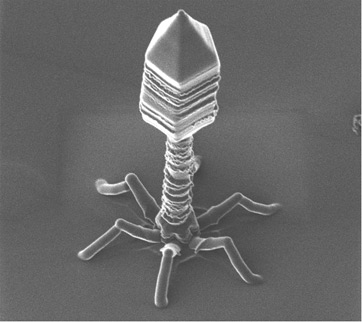Genetic Engineering-Based Therapies for Infectious Diseases
Gene therapy is in a golden age and more and more physicians and laypeople are growing aware of it. There have been stories about it, including on the AAPS Blog, and it’s most obvious application is to correct genetic defects within the human genome. This means genes encoding proteins that we need, where an abnormal or absent protein causes disease. The classic case is an enzyme deficiency. If someone lacks any normal copies of a gene for a certain enzyme, the enzyme is not produced, but gene therapy inserts the needed gene into the patient’s cells. With hemophilia B, for instance, lack of one enzyme disrupts a long pathway of biochemical reactions, leading to inadequate blood clotting. But clinical trials on gene therapy show that clotting can be normalized in such patients by inserting a working copy of the gene for the missing enzyme into the stem cells of the patient’s bone marrow.
 There are numerous other examples of gene therapy showing promise, including for infectious conditions, which might not be an obvious gene therapy application on first thought. After all, there are hundreds of antibacterial drugs on the market, numerous agents against parasites, a bunch of antiviral agents, and the list of effective vaccines keeps getting longer. Whereas infectious diseases used to be the way that most people died in developed countries, that’s not the case anymore. So why talk about gene therapy for infectious disease?
There are numerous other examples of gene therapy showing promise, including for infectious conditions, which might not be an obvious gene therapy application on first thought. After all, there are hundreds of antibacterial drugs on the market, numerous agents against parasites, a bunch of antiviral agents, and the list of effective vaccines keeps getting longer. Whereas infectious diseases used to be the way that most people died in developed countries, that’s not the case anymore. So why talk about gene therapy for infectious disease?
The answer is that certain infectious agents are not as vulnerable to conventional pharmaceutical tactics. Some viruses, bacteria, and protozoa have evolved tricks enabling them to hide in certain tissues, often laying dormant and striking over and over again, often killing the patient. An example is human immunodeficiency virus (HIV), which actually integrates its own genome into that of a patient’s own cells. Using a combination of therapies that attack HIV in different ways, the virus can be kept in check. So an HIV patient today can live for many decades, but the virus is still there in the patient’s cells, ready to kill if the therapy ever stops. Tuberculosis (TB) is a bacterial infection, but a particularly tough one. In fact, it’s the most common cause of death in HIV patients whose condition progresses to AIDS.
Then there is malaria, where the causative agent is neither bacterial nor viral, but protozoan. The lifecycle of the malaria parasite, called Plasmodium, is complex. It has forms that live in red blood cells, and (for some species) hide in the liver for many years, even if the ones in red blood cells are destroyed by anti-malaria drugs.
Various gene therapy tactics are coming online to combat these infections. One promising tactic depends on findings published recently in the online journal PLOS ONE showing a particular strain can infect certain ape species, and not others, by taking advantage of cell characteristics particular to the species. A CRISPR-based gene therapy might be designed to delete parts of the HIV genome that enable the species-specific tricks, even after the HIV has incorporated its genome into the patient’s. Furthermore, there are people who, due to a genetic deficiency, lack certain protein receptors on special blood cells called T lymphocytes. Normally, HIV requires these receptors in order to penetrate the cells, so the genetically deficient people are resistant to HIV. Gene therapies under development might transfer the “deficiency” to other people, thereby rendering them resistant to the virus. Gene therapy must be delivered inside tiny carrier particles, called vectors. Quite ironically, one of the best suited vectors is an HIV virus itself, altered to deliver the therapeutic payload into a patient’s cells, instead of the usual HIV content.
When it comes to TB and malaria, the strategy here is to perform gene therapy on the genome of the causative organism itself, rather than on the genome of the patient. With malaria, for instance, a Yale University study suggests that special RNA strands called morpholino oligomers could be employed to alter the gene expression of Plasmodium falciparum, the species of Plasmodium that is most problematic. Finally, there is an idea in the works, potentially applicable to all of these conditions, to use gene therapy to enhance the human immune system by delivering genes to help immune cells make particular antibodies.
Although the rate of deaths attributed to infectious diseases declined (at a very low rate) between 1990 and 2010, emerging pathogens continue to plague humanity. Being prepared with front-line defense mechanisms, such as gene therapy, is a critical step toward outpacing virulent infectious diseases. Source: http://bit.ly/2JdPL5D
To know more Visit: http://bit.ly/bacteriology2018
Experts gathering at San Antonio, USA on November 14-15, 2018 for the World Conference on Bacteriology and Infectious Diseases , where one of the important topic Genetic Engineering-Based Therapies for Infectious Diseases are also going to discussed by the experts from different countries. And so register now before the slots are booked and avail your early bird discounts.
For Registration Visit: http://bit.ly/2Ll16Dk
For further enquiries please contact: bacteriology@pulsusevents.org






